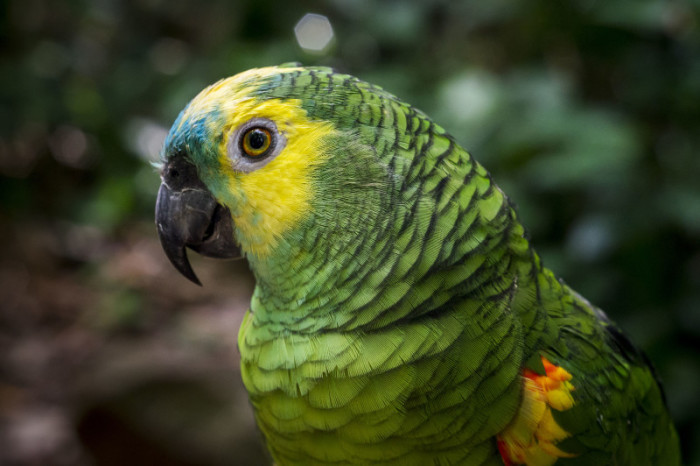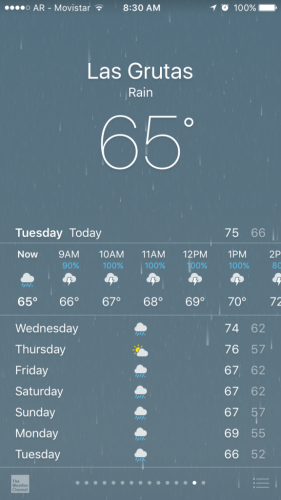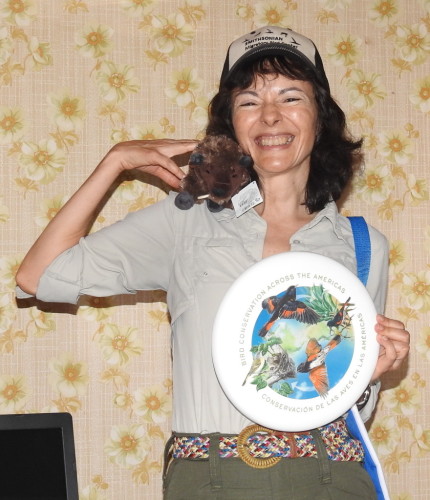The nature protectors
It takes a large team to capture shorebirds using cannon nets. Tonight, our team expands to include Guarda Ambientales (Environmental Rangers) of the Area Natural Protegida Bahia de San Antonio, and two conservation agents of Fundación Inalafquen, a local non-profit organization. The conservation agents are also Guardafaunas honorarios (literal translation in English = animal protectors) of the Río Negro Province.
Some of the daily tasks of this team include enforcing nature regulations, monitoring birds, performing outreach, and enforcing regulations to prevent the illegal wildlife trade, which for parrots, is rampant. Sebastián with Fabián, another Guardafauna, will soon give a talk at a local school to explain the consequences of wildlife trafficking on wildlife and on the people. As a part of the talk, they will burn 100 cages that were confiscated while holding illegally traded wildlife.

Wild Amzonian parrots, like this Amazona aestiva (turquoise-fronted parrots), are illegally traded in Argentina. The guardafauna work to enforce regulations regarding illegal wildlife trade. Photo: Deni Williams, CC.
The team of Environmental Rangers and Guardafaunas are dedicated, knowledgable, and full of pride for their place as a globally important shorebird site. It inspires me.
A few of the rangers have worked with Patricia previously to capture shorebirds. But many will be new to the exciting world of cannon netting. Over the next few days the rangers will generously devote their time to this project, and tonight’s meeting is an opportunity to introduce myself, learn more about the reserve and the work of the rangers, to discuss the goals of the Migratory Connectivity Project, and to plan our capture attempts. And of course, mate is passed around the table.
I have brought a satellite tag to pass around as well, and everyone has a lot of great questions.
Will the tags allow the rangers to learn more about local movements of Black-bellied Plovers in addition to the full migration? Yes, definitely, I answer, and there are a lot of excited faces.
Can the tags measure altitude? Other tags can, but not these tiny versions that weight only 5 grams.
How do the tags get power? A solar panel on the tag allows for solar charging.
Who manufacturers the tags? Microwave Telemetry in Columbia, MD, USA.
And, the question everyone always wonders about, the cost. $3800. With that, the tag is quickly handed back to me.
I show the team the migrations of plovers we tagged from Alaska, and promise that the migrations of any birds we tag in Argentina will have similar public maps. The rangers will be able to access the data at any time.
Throughout this discussion, Eveling Tavera has been translating for me, but now the discussion returns to full Spanish while Patricia describes the process of cannon netting and the roles we will all take. We also discuss the challenges the tides, winds, and the weather may pose this week.
Our weather forecast:

It is clear that Patricia is well loved and respected by the rangers, and to thank her for all that she is contributing to this process, she receives a few goodies from the Smithsonian National Zoo and Conservation Biology Institute.

Patricia Gonzalez with goodies from the Smithsonian National Zoo and Conservation Biology Institute
A world of thanks to the team of Guardambientales and Guardafauna assisting the Migratory Connectivity Project in Argentina.
Darío Tettamanti, Javier Camio, Amira Mandado, Andrea Velazquez, Sebastián Ortega, Paula Martínez, Jonatan Ferrada, Pedro Inda, Yanina Lillo
Previous posts from the 2017 Argentina expedition:
March 30: El team buscador
March 28: Thrown off course







